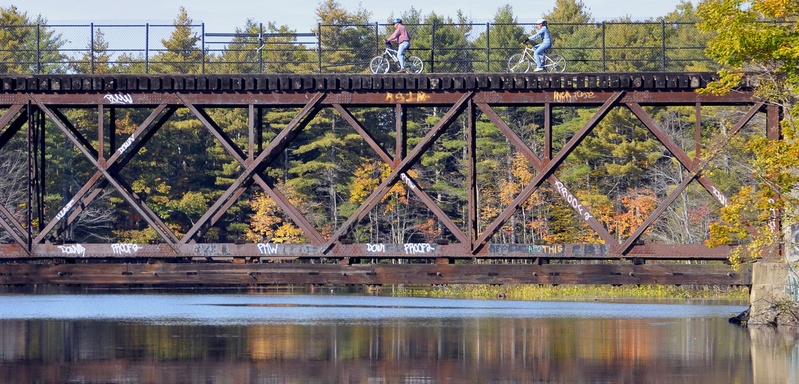The hardest policy questions don’t balance good against bad, or even the lesser of two evils: The thorniest issues are the ones that pit one good option against another.
There is such a conflict emerging in transportation planning circles regarding the expansion of walking and biking trails on unused railroad rights of way.
There have been very successful projects in which these strips of land have been transformed into urban trails that not only facilitate human-powered transportation, but provide recreational options that help people improve their health and make an area a more attractive place to be.
Portland Trails’ eastern waterfront trail, that links the Back Cove to Marginal Way, Congress Street (via Cutter Street) and Commercial Street is a great example of how an unused rail bed can become a civic asset.
But just because rail beds are not being used now doesn’t mean that they will never be needed. It’s important to remember that while converting a rail line to a bike or walking path is valuable, it should never preclude a return to passenger or freight rail, which could be a key part of our transportation future.
Under current conditions, reviving rail often looks like a too-costly option, but that will not necessarily always be true. Gas prices are currently depressed by an international recession that has lowered demand for petroleum. A recovery in Asia could change that dramatically, making alternative transportation much more attractive.
While many rail-to-trail projects give the pathways temporary use of the right of way, reserving them for future redevelopment as rail lines, the pathway conversions can make it more expensive to turn the right of way back to its original use. It also creates a constituency of people who like the trail and want to keep it.
That why rail supporters fought a grant proposal by Portland Trails, which was seeking federal support to rebuild the abandoned rail trestle between Portland and Falmouth.
Policy makers should take careful notice. Recreational facilities are valuable, but they should not preclude another form of transportation that could reduce the number of vehicles on our roads and better service our economy. When possible, new trails should coexist with rails, and only replace them when there is no foreseeable future for a return to trains.
Send questions/comments to the editors.



Comments are no longer available on this story